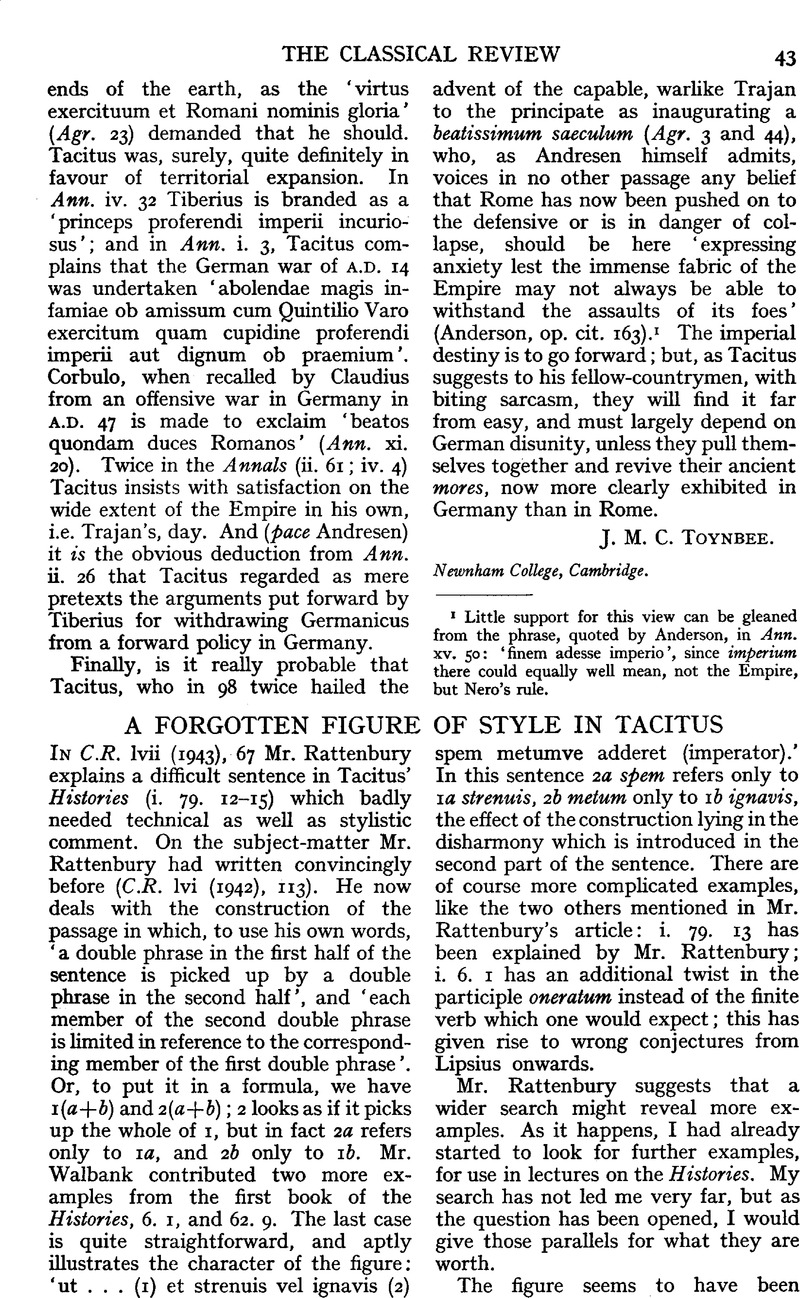No CrossRef data available.
Article contents
A Forgotten Figure of Style in Tacitus
Published online by Cambridge University Press: 27 October 2009
Abstract

Information
- Type
- Review Article
- Information
- Copyright
- Copyright © The Classical Association 1944
References
page 44 note 1 Herod. пµρί σхηάТων (Rhet. Gr. 3, p. 100 Spengel).
page 44 note 2 Horn. Il. 9. 5, 19. 47.
page 44 note 3 Pind. Frag. 243 Sch.
page 44 note 4 On Prop. ii. 22. 33: ‘Intricatius paullo dicendi genus a nullo animadversum iure mireris, cum duobus subiectis unum quidem praedicatum tribuatur, ita tamen ut partibus eius praedicati iterum discretis ad singula subiecta singulae per mutuum nexae quasi eminus referantur.’ He then quotes Paneg. ad Messed. 40 and 48, and Tac. Ann. i. 55.
page 44 note 5 Heraeus on Tac. Hist. i. 6. 2, iii. 25. 3.
page 44 note 6 In his note on Tac. Hist. ii. 92. 9 Heraeus confused the double zeugma with the so-called distributive use of aut. But the curious character of our figure of style is not brought out by translating aut by ‘and on the other hand’ instead of ‘or’. For aut other conjunctions like et, vel, -que, -ve, or even asyndeton can be used, and they are often mixed in the same sentence. What really matters is the double antithesis. The zeugma is easy if its second member can easily be referred to the first; it is difficult if the reference is obscured. In his wrong explanation Heraeus had been forestalled by Halm (app. crit. on Ann. i. 16. 6, retained in the later Teubner editions), and Nipperdey (note on Ann. ii. 30. 10, followed by Furneaux).
page 44 note 1 Heraeus on Tac. Hist. iii. 25. 3, referring to Hertzberg's note on Prop. ii. 22. 33.
page 44 note 2 Cf. n. 4, above.
page 44 note 3 Prop. ii. 22. 33.
page 44 note 4 Housman, , Journ. of Philol. xxi (1892/1893) 125Google Scholar; Baehrens's conjecture is oddly defended by Enk ad loc.
page 45 note 1 Aen. viii. 205 f. might belong here as well, if in ‘ne quid inausum aut intractatum scelerisve dolive fuisset’ the word inausum goes only with scderis, and intractatum with doli; but that is uncertain, x. 707–10 is a simple, not a double, syllepsis. In other cases -que, or a similar particle, is distributive, and no double antithesis is employed, e.g. vi. 616, and above, p. 44, n. 6.

